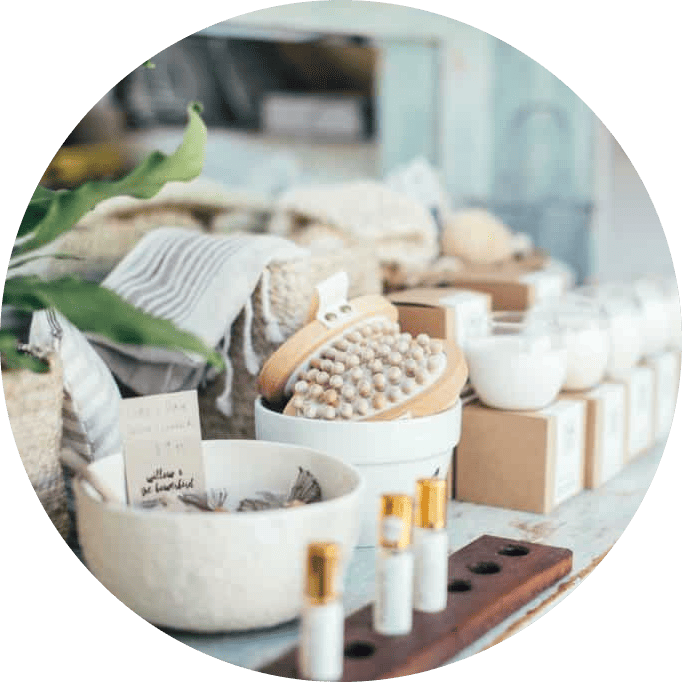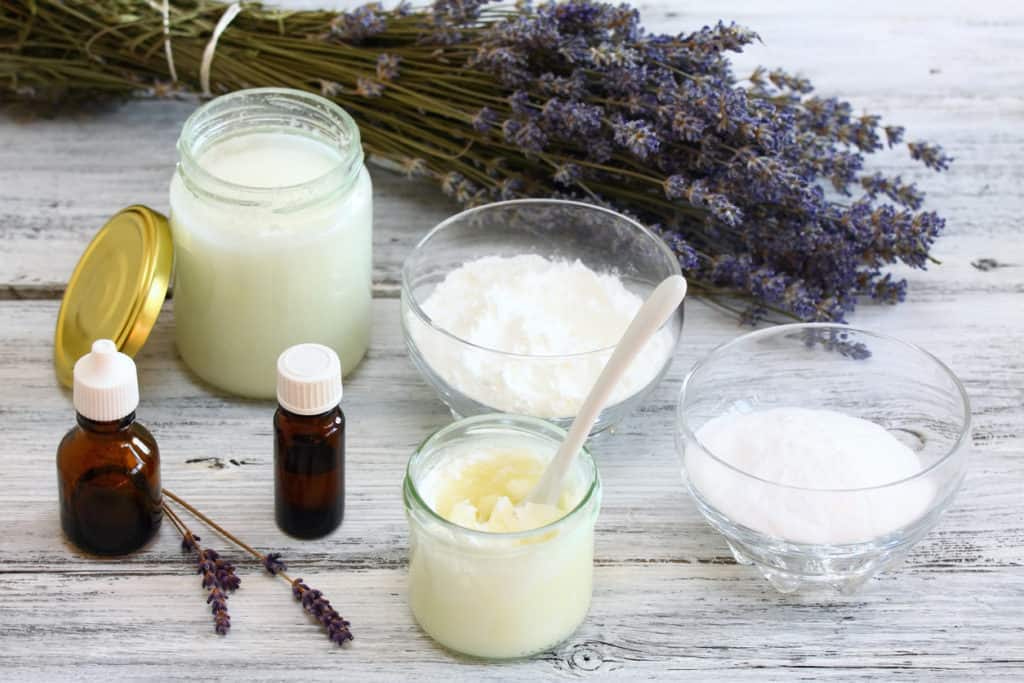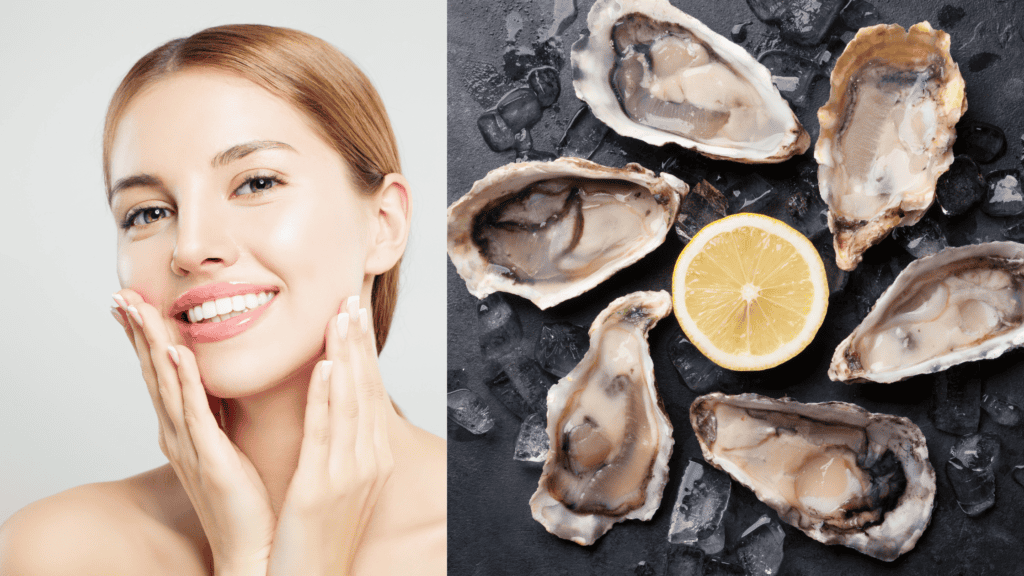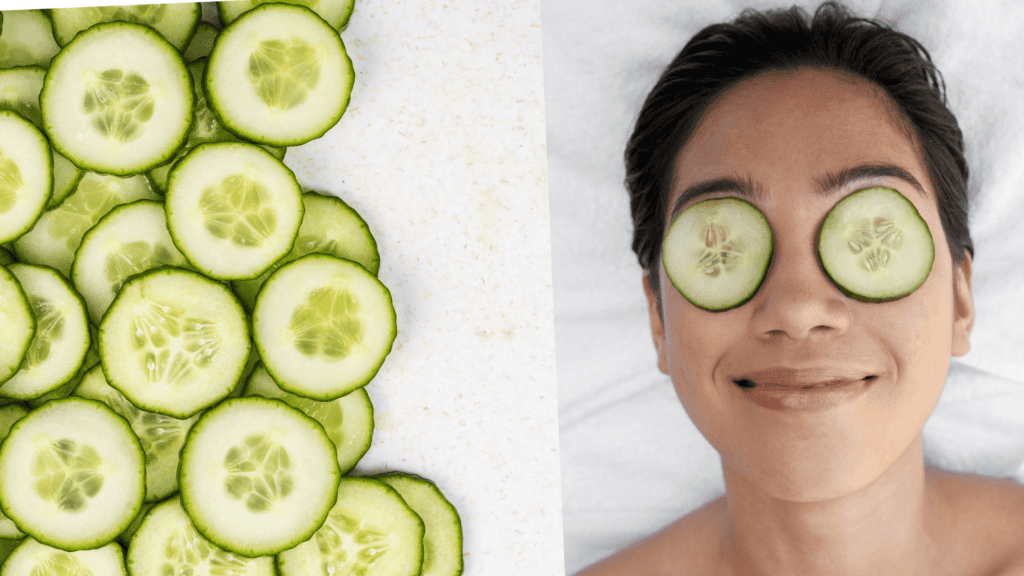Have you started using natural deodorants, then looked at the ingredient list and thought, I could make this, only to be overwhelmed by all the information available? If you have considered making your natural products, you need deodorant to get them right.
The bad news is that commercial deodorants often contain chemicals you don’t want under your arms or Skin. The good news is that natural deodorant is very easy to make, and once you tweak the ingredients to get the right texture and elements suitable for you, you will never look back.
The following natural deodorant recipe may be the only one that you need! It doesn’t contain baking soda, which can irritate some, and it stays solid, even in warmer climates. Try this simple, effective formula before getting lost in a sea of recipes.
Tea Tree Oil And Kaolin Clay Natural Deodorant Recipe.
Ingredients.
- 1/2 TBSP Coconut oil
- 1 TBSP Shea Butter
- 1 TBSP Cocoa Butter
- 1/2 TBSP Arrowroot powder
- 1/2 TBSP Kaolin Clay
- 1 TSP Magnesium Hydroxide Powder
- Five drops of Tea Tree essential oil
- Five drops of Citrus essential oil
- Five drops of Lavender essential oil
Instructions.
- Heat the Cocoa Butter, Coconut oil, and Shea Butter in a double boiler. Remove from heat.
- Let thicken for one hour.
- Gradually Stir in the Arrowroot Powder, Kaolin Clay, and Magnesium Hydroxide Powder.
- Beat the mixture as it cools to a creamy consistency.
- Add the essential oils, and stir through to combine.
- Pour into a small jar or a push-up container.

You can apply the deodorant immediately. The recipe will thicken over the next twenty-four hours. Do not refrigerate it, as it will ruin the texture and consistency.
Your natural deodorant is now ready to use. Enjoy!
How Do Natural Deodorants Work?
Natural deodorants work by absorbing moisture and eliminating odor by using ingredients that have those beneficial qualities. Antiperspirants cause you to stop sweating by blocking the sweat ducts. That is the purpose of Aluminium, and one reason among many is that it is an ingredient many people now want to avoid.
Natural deodorants allow your body to breathe and work naturally while minimizing the smell and controlling excessive moisture. There is nearly always a detox period while your body adjusts, then you will find these products work very well.
Some of the best ingredients to absorb odor in natural deodorants are baking soda and Magnesium.
Try these tips to get your natural deodorants to work better, as there can often be an adjustment period if you have been using more commercial chemicals!
Is Baking Soda Bad To Use In Natural Deodorant?
Baking soda, or sodium bicarbonate, is not bad; it helps minimize and neutralize odors and absorb sweat. It also has antibacterial properties; it is, therefore, an ingredient you will often see in natural deodorant recipes because it works.
The problem with Baking soda for natural deodorant recipes is that it is quite alkaline, with a PH of 9. The Skin is acidic with a PH of 4.5-6.5. Ingredients with high PH will disrupt the skin’s acid mantle, causing irritation, bumps, rashes, and soreness. So while Baking soda reduces odor, it can be a problem for people with sensitive skin.
Most people can generally tolerate baking soda added in the correct ratio. If you buy natural deodorants, you may handle it better than if you make it yourself; the proportions are more correctly balanced, and the other ingredients temper it.
For people who can’t tolerate Baking soda on their Skin, you will need another form of odor absorption.
Magnesium is an excellent alternative as an odor-blocking ingredient to baking soda in deodorant recipes.
What Are The Benefits Of Magnesium In Natural Deodorants?
Magnesium oil, made from magnesium flakes mixed in water, is a beneficial ingredient for a natural deodorant. It works well to neutralize odor and can be an alternative to baking soda if you can’t tolerate that.
You can use Mineral salts as a natural odor blocker. They have many benefits when used topically. Body odor is often worse when we lack certain minerals, and you may find that bathing in magnesium chloride flakes makes a massive difference to your overall well-being and the smell of your body.
Magnesium hydroxide occurs naturally as the mineral brucite and is a common ingredient in many natural deodorants. These salts also supplement magnesium levels in the body. Many people report mixing Magnesium hydroxide with water to form a paste; that alone is enough to eliminate underarm odor!

Read here to try these three natural homemade deodorant recipes using different forms of Magnesium.
What Are The Best Oils For Natural Deodorants?
Carrier oils comprise the ‘body’ or base of natural deodorant; as the name suggests, they carry beneficial ingredients to the Skin to help with scent, odor, or moisture absorption.
The best carrier oils for natural deodorants must remain stable and solid at room temperature. Natural plant oils or butter contain beneficial plant properties to the Skin; the best ones are also highly emollient and create a moisture barrier.
If you look at the labels of natural deodorants, you will generally find the same oils; Shea butter, Coconut oil, and Cocoa butter. These are among the best oils, but you can experiment with other harder butter and oils like Jojoba or Olive oil.
Why Use Coconut Oil In Natural Deodorants?
Coconut oil is one of the main ingredients in natural deodorants; you will see it feature in almost every DIY recipe, and for a good reason, it has so many beauty uses.

Coconut oil is rich in fatty acids, including capric, caprylic, and lauric. It also has antibacterial and anti-inflammatory properties that are soothing, moisturizing, and calming to the Skin, making it the perfect oil to use under your arms.
Coconut oil is relatively stable at room temperature; it melts at around 25c, so it is generally solid at room temperature, making it an excellent oil for natural formulations. Add firmer oil with a higher melting point to keep the recipe from liquefying in hotter places.
Use virgin, unrefined Coconut oil with all its natural properties intact.
The Benefit Of Shea Butter In Natural Deodorant.
Shea butter is a common ingredient in natural deodorants as it is a stable butter. Research shows it has anti-inflammatory and antioxidant properties, excellent for the delicate underarm area.
Shea butter has a melting point of around 40c, much higher than Coconut oil, and will keep your formula from melting, even if you travel to hotter countries.
Shea butter’s fatty acid content includes linoleic, oleic, stearic, and palmitic acids, making it highly moisturizing.
Shea butter absorbs quickly and holds moisture into the Skin, another reason to use it in DIY natural deodorant, as it helps keep the underarm dryer.

Use unrefined Shea butter between grades A-D. It contains the highest bioactive compounds, making it the most effective.
The Benefit Of Cocoa Butter In Natural Deodorant.
Cocoa Butter [Theobroma Cacao] extracted from the dry roasted bean is the same bean that chocolate comes from; the butter shares the same warm, familiar chocolatey smell and is a favorite butter for beauty products.
Cocoa butter is a fantastic ingredient for natural deodorants as it contains fatty acids, Stearic, Oleic, Palmitic, and Lauric, which give it moisturizing, emollient qualities. A velvety and soft feel on the Skin creates a barrier to keeping moisture.

While Cocoa butter is pretty solid at room temperature, it melts at around 35c, keeping deodorant recipes stable but softening immediately on contact with Skin. It is anti-inflammatory, soothing for irritated armpits, and contains vitamins E, K, and D.
Cocoa butter also smells lovely, a bonus for natural deodorant recipes, especially if you want to avoid essential oils.
What Are The Best Oil Absorbers To Use In Natural Deodorants?
The best oil absorbers in natural deodorant formulations are cosmetic clays like Bentonite and Kaolin clay; these thicken the recipe, pull skin toxins, absorb odor, and control moisture.
Plant starches like Arrowroot powder or Cornstarch are also the best oil absorbers for homemade natural deodorant formulas; they have thickening and beneficial botanical properties.
The Benefit Of Arrowroot For Natural Deodorant.
The benefits of Arrowroot powder for natural deodorant formulations come from its thickening abilities; it is made from the roots of several tropical plants and is a starch used as a thickening agent in foods and formulas.
Arrowroot has been used as an herbal remedy to reduce skin infection and irritation for years. It also has nutritional and medicinal benefits and beneficial antibacterial properties, making it an excellent ingredient to help delicate underarms from chafing and itching.

Choose Arrowroot to thicken natural deodorant recipes for these antiseptic properties. Its ability to absorb excessive sweat and moisture is a great natural ingredient to add to deodorants.
The Absorbing Benefit Of Clay In Natural Deodorant.
Clay has been used for centuries to cleanse, treat and heal various skin conditions. One of its best benefits is its ability to pull out and absorb toxins and impurities in the Skin, making it highly beneficial for use in natural deodorants; it thickens the mixture but gets rid of dirt, debris, and odor.
One of the best clays for a natural deodorant is White Kaolin Clay, often known as white clay or China clay. It is suitable for sensitive Skin and is a versatile clay that is light, finely milled, and soft, making it ideal for deodorant formulations. You can also use Bentonite clay, which is highly absorbent, a greyer clay and most people prefer the whiter, softer Kaolin clay.

Buy White Kaolin Clay for adding to natural deodorant recipes; it is excellent for sensitive Skin. The Skin will benefit significantly from kaolin clay’s varying genuine mineral content, including calcium, magnesium, potassium, and iron. These minerals are absorbed into the Skin, pull toxins, and nourish and balance the Skin.
The Best Essential Oils To Use In Natural Deodorant Recipes.
Essential Oils are essential for fragrance in natural cosmetic formulations; however, unlike commercial fragrances, which don’t have to list their ingredients, essential oils come from plants and have many other botanical properties beneficial to the Skin.
Choose essential oils known to help with odor and are gentle enough to use on the Skin without irritation. Essential oils create a lovely fragrance, but you can leave them out.
The Benefit Of Tea Tree Oil In Natural Deodorants.
Tea tree; Has a slightly medicinal smell, is antibacterial and antiseptic, and is a favorite for its skin healing benefits—Choose Manuka essential oil for similar properties but with a sweeter, lighter scent.

Unlike most essential oils that need to dilute in carrier oils, you can use Tea tree oil directly on the Skin; it is well-tolerated, eliminates odor, and is one of the best essential oils for natural deodorants.
Lavender Essential Oil For Natural Deodorant.
Lavender; A favorite for its soothing, calming properties and gentle scent. Lavender essential oil is high in antioxidants and vitamins A and E, which are beneficial for irritated skin.

Lavender essential oil is gentle on the Skin and one of the most loved essential oils; it also plays well with most other oils to create a pleasing fragrance.
Are Citrus Oils Good For The Skin In Natural Deodorant?
Citrus essential oils are common ingredients in soaps and cleaning products. Lime, tangerine, Grapefruit, orange, and bergamot combine well in natural deodorants.
The citrus oils are sweet, tart, tangy, and refreshing and have excellent antibacterial and inflammatory properties. While photosensitive on the Skin, armpits not exposed to light are a great place to use them to reap the benefits of these gorgeous smelling, rejuvenating oils!

Many other essential oils have unique benefits and scents, so have fun experimenting, but remember to patch test skin for irritation and consult a dermatologist.
Understanding ingredients is an excellent place to start knowing what to add to your DIY recipes; it also makes us more aware of reading product labels and what we should or should not be putting on our Skin.
This post contains affiliate links. If you purchase through these links, we may earn a small commission, not affecting your sale.




